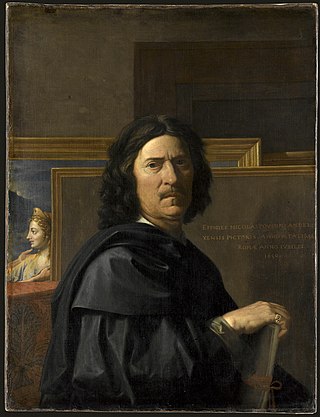
Nicolas Poussin was a French painter who was a leading painter of the classical French Baroque style, although he spent most of his working life in Rome. Most of his works were on religious and mythological subjects painted for a small group of Italian and French collectors. He returned to Paris for a brief period to serve as First Painter to the King under Louis XIII and Cardinal Richelieu, but soon returned to Rome and resumed his more traditional themes. In his later years he gave growing prominence to the landscape in his paintings. His work is characterized by clarity, logic, and order, and favors line over color. Until the 20th century he remained a major inspiration for such classically-oriented artists as Jacques-Louis David, Jean-Auguste-Dominique Ingres and Paul Cézanne.

Simon Vouet was a French painter who studied and rose to prominence in Italy before being summoned by Louis XIII to serve as Premier peintre du Roi in France. He and his studio of artists created religious and mythological paintings, portraits, frescoes, tapestries, and massive decorative schemes for the king and for wealthy patrons, including Richelieu. During this time, "Vouet was indisputably the leading artist in Paris," and was immensely influential in introducing the Italian Baroque style of painting to France. He was also, according to Pierre Rosenberg, "without doubt one of the outstanding seventeenth-century draughtsmen, equal to Annibale Carracci and Lanfranco."

The siege of Jerusalem of 70 CE was the decisive event of the First Jewish–Roman War, in which the Roman army led by future emperor Titus besieged Jerusalem, the center of Jewish rebel resistance in the Roman province of Judaea. Following a five-month siege, the Romans destroyed the city, including the Second Jewish Temple.

Cassiano dal Pozzo was an Italian scholar and patron of arts. The secretary of Cardinal Francesco Barberini, he was an antiquary in the classicizing circle of Rome, and a long-term friend and patron of Nicolas Poussin, whom he supported from his earliest arrival in Rome: Poussin in a letter declared that he was "a disciple of the house and the museum of cavaliere dal Pozzo." A doctor with interests in the proto-science of alchemy, a correspondent of major figures like Galileo, a collector of books and master drawings, dal Pozzo was a node in the network of European scientific figures.
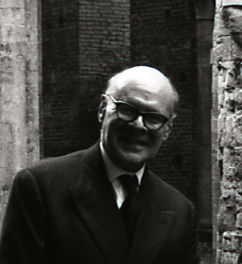
Sir John Denis Mahon, was a British collector and historian of Italian art. Considered to be one of the few art collectors who was also a respected scholar, he is generally credited, alongside Sacheverell Sitwell and Tancred Borenius, with bringing Italian pre-Baroque and Baroque painters to the attention of English-speaking audiences, reversing the critical aversion to their work that had prevailed from the time of John Ruskin.

The Seven Sacraments refers to two series of paintings of the seven sacraments by the French painter Nicolas Poussin.

The Adoration of the Shepherds is a painting of 1633–34 by the French painter Nicolas Poussin (1594–1665), now in the National Gallery, London. It is in oils on canvas, and measures 97.2 by 74 centimetres. Unusually for Poussin, it is signed "N. Pusin.fe" ["fecit"] on the stone at lower right. By 1637, soon after it was painted, it was owned by Cardinal Gian Carlo de' Medici (1611–1663), the second son of Grand Duke Cosimo II of Tuscany and was placed in his villa outside Florence.

The Plague of Ashdod is also known as The Miracle of the Ark in the Temple of Dagon, by the French artist Nicolas Poussin. The painting represents a story from 1 Samuel in the Old Testament. The original painting currently hangs in the Louvre in Paris. Poussin was commissioned to paint The Plague of Ashdod by Fabrizio Valguarnera. Fabrizio Valguarnera was a Sicilian merchant who was put on trial for laundering money through the purchase of this painting; he also commissioned more than one version of this piece. Poussin painted this during a plague that took place in Italy from 1629 to 1631, which influenced his accurate portrayal of the epidemic.

The Death of Germanicus is a painting made in 1627 by Nicolas Poussin for Francesco Barberini. It is kept at the Minneapolis Institute of Art.

The Martyrdom of Saint Erasmus is an altarpiece, painted by Nicolas Poussin in 1628–1629, originally displayed in St. Peter's Basilica, Rome.

The Bust of Nicolas Poussin is a marble portrait bust by the Flemish sculptor François Duquesnoy. Nicolas Poussin was a close friend of Duquesnoy, and the leading classicist painter in 17th-century French art, although he spent most of his working life in Rome.
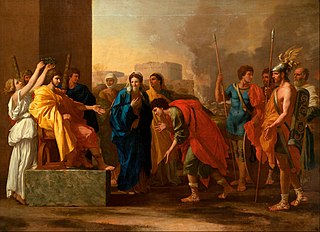
The Continence of Scipio is a 1640 oil on canvas painting by Nicolas Poussin, commissioned by Abbé Gian Maria Roscioli, secretary to Pope Urban VIII. It changed owners several times, reaching the Walpole collection in the first half of the 18th century, from which it was bought for the Hermitage Museum by Catherine the Great in 1779. It was reassigned to the Pushkin Museum in 1930, where it remains. The painting is based on the historical continence of Scipio.

The legendary rape of the Sabine women is the subject of two oil paintings by Nicolas Poussin. The first version was painted in Rome about 1634 or 1635 and is now in the Metropolitan Museum of Art in New York City, catalogued as The Abduction of the Sabine Women. The second, painted in 1637 or 1638, is in the Louvre in Paris, catalogued as L'enlèvement des Sabines.
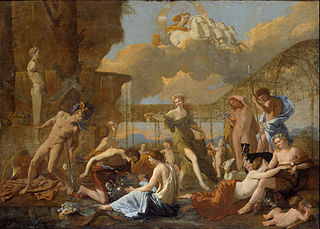
The Empire of Flora is an oil painting by Nicolas Poussin, dated to about 1630 or 1631, which is now in the Gemäldegalerie Alte Meister in Dresden.
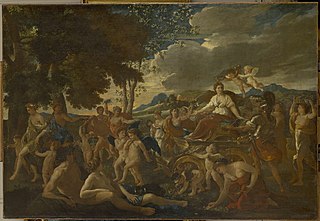
The Triumph of Flora is an oil painting by Nicolas Poussin, dated to about 1627 or 1628, which is now in the Louvre in Paris.
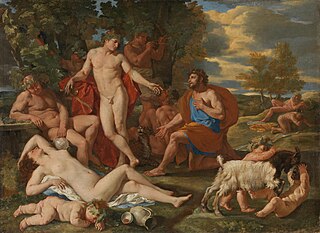
Midas and Bacchus is an oil painting usually attributed to Nicolas Poussin and dated to about 1624–1629, which is now in the Alte Pinakothek, Munich.
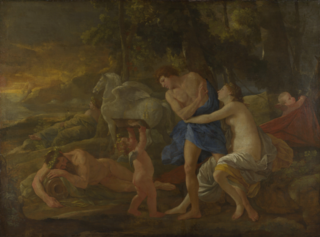
Cephalus and Aurora is the title of two oil paintings by Nicolas Poussin, both dated to about 1629 or 1630. The first is in the National Gallery, London; the second belongs to the Worsley baronets, of Hovingham Hall, Yorkshire.
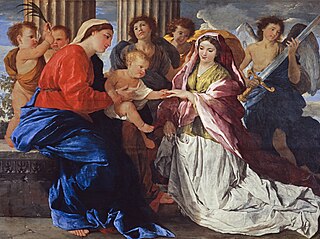
The Mystic Marriage of Saint Catherine is an oil on panel painting by Nicolas Poussin, dated to about 1628–1629, which depicts the mystical marriage of Saint Catherine to Christ. The picture is now in the Scottish National Gallery, Edinburgh.

A Bacchanalian Revel Before a Term is an oil painting by Nicolas Poussin, dated to 1632–1633, which is now in the National Gallery in London.




















